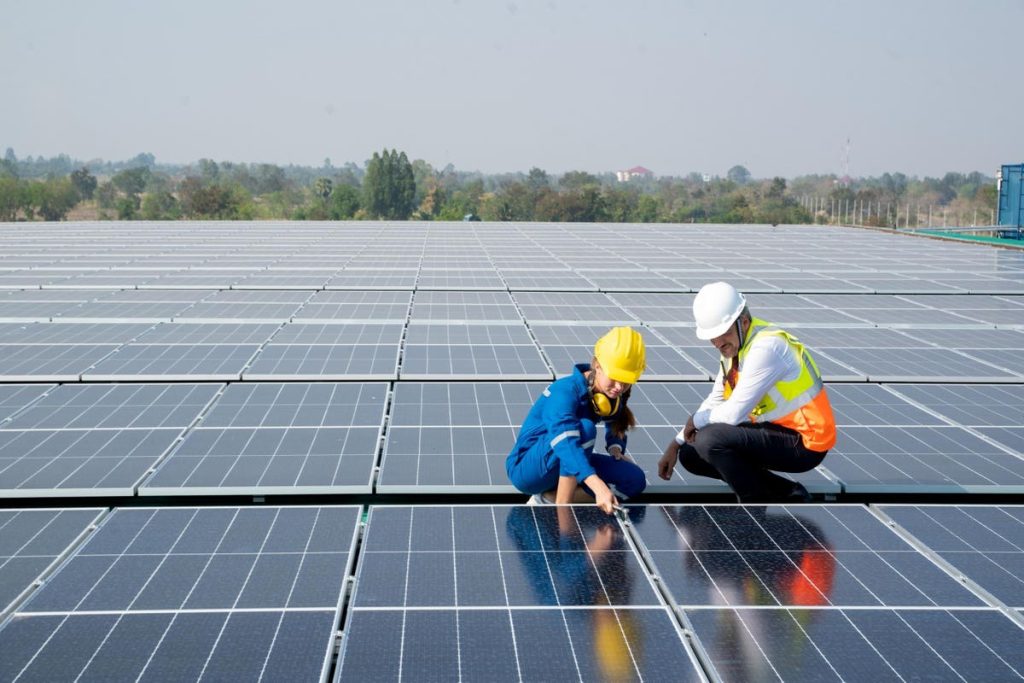Mahesh Ramanujam is the cofounder, President and CEO of Global Network for Zero.
The droughts, wildfires, floods and storms that have marked what’s been confirmed as the hottest summer on record are a stark reminder that we not only need to accelerate our decarbonization efforts but also invest in the adaptation of our public and private infrastructure.
Fortunately, a growing number of governments, corporations and investors are recognizing the urgency of our growing climate challenge. They are making commitments to take action, and they are assembling and deploying capital, with investments in energy-related emissions reductions totaling some $1.1 trillion in 2022.
Yet, upon closer inspection, it’s clear that a change in approach is needed. Climate change mitigation spending is considerably lower than what’s needed to meet Paris Agreement goals. Worse still, both the volume and annual growth of public and especially private investment toward climate change adaptation is significantly less than flows into climate change mitigation. Left unchanged, we stand a slim chance of preventing the adverse effects of climate change from intensifying. We will also leave ourselves exposed to the climate changes that are already “locked in” by our historical emissions.
The private sector, whose contributions to climate adaptation finance comprise barely 2% of the annual total, must take responsibility here. I believe the commercial real estate sector, specifically, is both uniquely responsible for and capable of leading this effort for three main reasons.
First, on responsibility, buildings are, quite literally, our first and most critical line of defense against the extreme weather events made more frequent and severe by our changing climate. Second, though federal, state and municipal governments might offer incentives and, in rare cases, mandates for climate change mitigation and adaptation in commercial buildings, commercial real estate leaders are typically left to figure out how to undertake these retrofits on their own.
And third, concerning their collective capacity for action, commercial real estate leaders are uniquely positioned to “kill two birds with one stone.” There are a number of commercially available technologies and expedient, low-risk financing options that building developers, owners and managers can deploy to both reduce the emissions of their assets, which reached an all-time annual high in 2021, and strengthen the resilience of the built environment against a changing climate.
Energy-efficient technologies that achieve both climate mitigation and adaptation range widely, from more efficient heating and cooling systems to building-to-grid integration and even onsite renewable energy and storage.
One of the most common and beneficial energy efficiency retrofits is installing more efficient heating and cooling systems. For example, heat pumps are not only three to five times more efficient than gas boilers but can also be a cost-efficient means of indoor temperature control. There are benefits for indoor air quality, too. Hard infrastructure adaptations such as better insulation, green roofs and double-glazed windows, especially when combined with structural and weather-resilient adaptations, also help improve energy efficiency, thus limiting operational emissions. When these adaptations are paired with a building energy management system, building owners and managers can better monitor and control operational energy usage, identify delinquent systems and inform future retrofit and renovation priorities.
Energy-efficiency improvements promise benefits for building occupants and tenants, as well as their neighbors. A study by the U.S. Department of Energy revealed that, by reducing the operational energy needs of a building asset, the resulting decrease in electrical loads lowered the risk of blackouts during extreme weather events, such as heat waves.
Commercial real estate leaders have a real opportunity to transform their buildings into community assets, namely through building-to-grid integration, onsite renewable energy and storage and other resilience-boosting measures.
By enabling a building to have two-way communication with the grid and, in turn, their utility, buildings can provide real-time and scheduled grid services. Integration allows buildings to reduce onsite energy consumption through demand response and load shifting, thereby increasing both building and grid resilience and ultimately reducing greenhouse gas emissions attributable to both the building and its grid-connected neighbors. Additionally, from rooftop solar to bladeless wind turbines, the installation of onsite renewable power generation and storage systems promises similar benefits. Taken together, these technological upgrades could not only increase energy cost-savings but also enable building owners to generate revenue from both the load flexibility and surplus power provided by their assets.
Considering this potential and the commercial real estate sector’s responsibility to realize it, it stands to reason that optimal financing or, rather, apprehensions over securing optimal financing is the main impediment to action.
CRE leaders can rest assured, though, that by pursuing a path of strategic incrementalism, they’ll be able to deliver for tenants, occupants and host communities. Specifically, dual mitigation and adaptation retrofit projects that yield rapid returns in the form of operational emissions reductions and energy cost savings should be the priority, particularly if the necessary capital outlay can be subsidized with tax credits and grants. With the resultant energy savings, CRE leaders will have a greater discretionary budget for adaptation measures down the line.
Commercial real estate leaders must take the long view. With the climate adaptation market valued in the trillions of dollars and investors increasingly seeking opportunities to boost the ESG credentials of their portfolios, the wind is at the back of the commercial real estate developers, owners and managers who take action.
Forbes Business Council is the foremost growth and networking organization for business owners and leaders. Do I qualify?
Read the full article here









